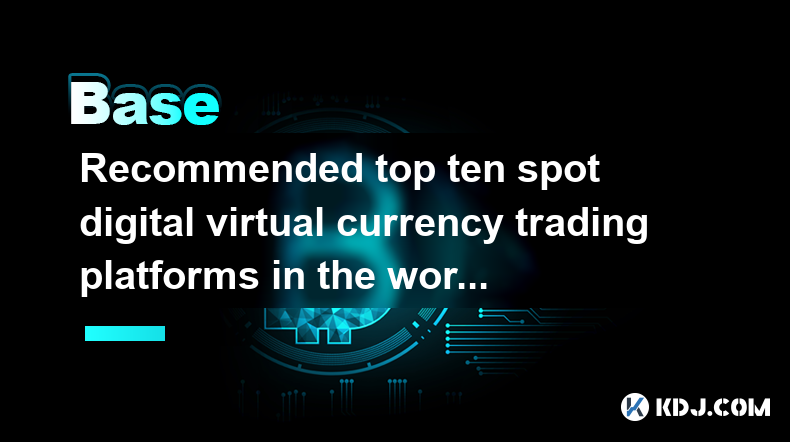-
 Bitcoin
Bitcoin $87,915.1013
4.01% -
 Ethereum
Ethereum $1,626.0336
3.05% -
 Tether USDt
Tether USDt $1.0002
0.03% -
 XRP
XRP $2.1225
3.25% -
 BNB
BNB $603.9394
2.51% -
 Solana
Solana $138.6104
1.03% -
 USDC
USDC $1.0000
0.01% -
 Dogecoin
Dogecoin $0.1612
4.65% -
 TRON
TRON $0.2431
-0.84% -
 Cardano
Cardano $0.6407
4.19% -
 Chainlink
Chainlink $13.4436
2.16% -
 Avalanche
Avalanche $20.5554
5.48% -
 UNUS SED LEO
UNUS SED LEO $9.0885
-2.49% -
 Stellar
Stellar $0.2597
7.37% -
 Toncoin
Toncoin $3.0010
0.25% -
 Shiba Inu
Shiba Inu $0.0...01257
1.68% -
 Sui
Sui $2.2420
6.60% -
 Hedera
Hedera $0.1711
4.33% -
 Bitcoin Cash
Bitcoin Cash $344.5133
3.21% -
 Polkadot
Polkadot $3.9101
1.15% -
 Hyperliquid
Hyperliquid $18.1893
5.38% -
 Litecoin
Litecoin $80.0892
5.05% -
 Bitget Token
Bitget Token $4.4777
1.97% -
 Dai
Dai $1.0000
0.00% -
 Ethena USDe
Ethena USDe $0.9994
0.01% -
 Pi
Pi $0.6362
1.91% -
 Monero
Monero $214.2887
-0.67% -
 Uniswap
Uniswap $5.4298
4.03% -
 Pepe
Pepe $0.0...07950
6.54% -
 Aptos
Aptos $5.1342
2.79%
Who does the whale often mentioned in the crypto community refer to?
Crypto whales, holding significant amounts of cryptocurrency, can influence market prices through their trading activities, impacting smaller investors.
Mar 30, 2025 at 07:21 am

Understanding Crypto Whales
In the cryptocurrency world, the term "whale" refers to individuals or entities holding a significant amount of a particular cryptocurrency. This amount is usually large enough to influence the market price through their buying and selling activities. There's no single universally agreed-upon threshold, but generally, owning a percentage of the total circulating supply in the high single digits or even double digits qualifies someone as a whale. Their actions can cause significant price fluctuations, impacting smaller investors.
Identifying a Whale: Is it a Person or an Entity?
A whale isn't always a single person. It could be:
- A wealthy individual: Early adopters of cryptocurrencies or those who invested heavily during its early stages often accumulated vast holdings.
- A large investment firm: Hedge funds, venture capital firms, and other institutional investors often hold substantial cryptocurrency portfolios.
- A cryptocurrency exchange: Exchanges themselves can hold massive amounts of various cryptocurrencies, influencing market dynamics.
- A decentralized autonomous organization (DAO): DAOs, with their collective treasury, can amass significant cryptocurrency holdings.
The Impact of Whale Activities
Whales' actions directly impact market volatility. Their buying activity can push prices up, creating a "whale pump," while their selling can trigger sharp price drops, leading to a "whale dump." This behavior can be unpredictable and significantly affect smaller investors who may not have the resources to withstand such swings. This is why understanding whale activity is crucial for informed investment decisions. Their influence extends beyond simple buy/sell orders. They can manipulate the market through activities like wash trading (creating artificial volume) and creating coordinated pump-and-dump schemes.
How Whales Accumulate Their Holdings
There are several ways whales accumulate their massive holdings:
- Early adoption: Investing in cryptocurrencies during their early stages, when prices were significantly lower, allows for the accumulation of large quantities with relatively smaller initial investments.
- Strategic investment: Whales often employ sophisticated trading strategies to accumulate assets, capitalizing on market trends and opportunities.
- Mining: For cryptocurrencies that use a proof-of-work consensus mechanism, significant mining operations can result in the accumulation of large quantities of the cryptocurrency.
- Acquisitions: Large-scale acquisitions of cryptocurrency holdings from other individuals or entities can quickly increase a whale's position.
The Ethics of Whale Activity
The ethical implications of whale activity are a complex topic. While some argue that whales are simply exercising their right to buy and sell, others criticize their actions for potentially manipulating markets and harming smaller investors. Regulations aiming to curb market manipulation are still evolving, and the decentralized nature of many cryptocurrencies makes it challenging to enforce them effectively. The lack of transparency surrounding some whale activities further complicates the ethical debate.
Tracking Whale Activity
While complete transparency is impossible, several methods help track whale activity:
- On-chain analysis: Analyzing blockchain data can reveal large transactions and the movement of significant cryptocurrency holdings. This data is publicly available but requires specialized tools and expertise to interpret effectively.
- Social media monitoring: Observing social media activity, especially on platforms popular within the cryptocurrency community, can sometimes provide clues about potential whale movements. However, this method is highly speculative and unreliable.
- Exchange data: While exchanges don't typically reveal individual holdings, the aggregate data they publish can sometimes hint at significant trading activity.
The Role of Whales in Market Development
Despite the potential for manipulation, whales play a crucial role in the cryptocurrency ecosystem. Their significant investments provide liquidity, support the development of the cryptocurrency, and can attract further investment from other market participants. However, this positive influence is often overshadowed by concerns about market manipulation and the potential for unfair advantages. The balance between these aspects remains a key challenge in the cryptocurrency space.
Understanding Whale Psychology
Trying to understand the motivations and strategies of whales is a speculative endeavor. However, some common assumptions exist:
- Long-term investment: Many believe that some whales hold cryptocurrencies as long-term investments, believing in the underlying technology and its future potential.
- Short-term gains: Others speculate that some whales primarily focus on short-term profits, engaging in speculative trading and market manipulation.
- Hedging strategies: Some may utilize cryptocurrency as a hedge against inflation or other economic uncertainties.
- Influence and control: A certain level of influence and control over the market may be a driving factor for some whales.
The Future of Whale Influence
The influence of whales is likely to remain a significant factor in the cryptocurrency market for the foreseeable future. However, the development of decentralized finance (DeFi) and other technologies could potentially mitigate their influence. Increased regulatory scrutiny and the development of more sophisticated analytical tools may also play a role in shaping the future dynamics of whale activity.
Frequently Asked Questions
Q: Are all whales malicious actors?
A: No, not all whales are malicious. Many hold significant cryptocurrency holdings as long-term investments or for other legitimate reasons. However, their actions can still significantly impact the market, regardless of their intent.
Q: How can I protect myself from whale manipulation?
A: There's no foolproof method, but diversification, risk management, and avoiding impulsive trading based on short-term price fluctuations can help mitigate the impact of whale activity. Staying informed about market trends and analyzing on-chain data can also be beneficial.
Q: Is it possible to identify a whale before they act?
A: Predicting whale actions is extremely difficult and largely speculative. While on-chain analysis can reveal large transactions, it doesn't necessarily predict their timing or market impact.
Q: What regulations are in place to control whale activity?
A: Regulations regarding cryptocurrency market manipulation are still evolving and vary significantly across jurisdictions. The decentralized nature of many cryptocurrencies makes enforcement challenging.
Q: Can small investors compete with whales?
A: Directly competing with whales is generally impractical for small investors. Focusing on long-term strategies, diversification, and risk management is a more effective approach.
Disclaimer:info@kdj.com
The information provided is not trading advice. kdj.com does not assume any responsibility for any investments made based on the information provided in this article. Cryptocurrencies are highly volatile and it is highly recommended that you invest with caution after thorough research!
If you believe that the content used on this website infringes your copyright, please contact us immediately (info@kdj.com) and we will delete it promptly.
- Atok Partners with Bitgert to Advance Infrastructure and Advertising Economy in Web3 World
- 2025-04-21 23:00:13
- Pi Network (PI) Coin Could Be the Next Cryptocurrency to Launch an Exchange Traded Fund (ETF)
- 2025-04-21 23:00:13
- Strategy, the world's largest corporate Bitcoin holder, has purchased 6,556 BTC for $555.8 million
- 2025-04-21 22:55:13
- Bitcoin (BTC) Price Prediction: Arthur Hayes Hints at a Final Opportunity to Buy BTC Under $100K
- 2025-04-21 22:55:13
- Binance Adds ZORA to Spotlight Projects on Binance Alpha Alongside Other Names
- 2025-04-21 22:50:12
- Bitcoin (BTC) Price Prediction: BTC Surges Nearly 5%
- 2025-04-21 22:50:12
Related knowledge

Recommended top ten spot digital virtual currency trading platforms in the world in 2025
Apr 21,2025 at 05:15pm
Recommended top ten spot digital virtual currency trading platforms in the world in 2025 1. Binance As the world's premier cryptocurrency trading platform, Binance is known for its extensive trading pairs and efficient trading services. Its features include: High Liquidity : Binance has huge trading volumes, ensuring users can trade at the best pric...

Ranking of top ten virtual currency trading apps in the currency circle (the latest authoritative list in 2025)
Apr 21,2025 at 10:28pm
The top ten virtual currency trading apps in the 2025 cryptocurrency circle are listed as follows: 1. Binance Binance is one of the world's leading cryptocurrency trading platforms, known for its efficient trading system and extensive currency support. Binance's user interface is designed with simplicity and is suitable for beginners and profess...

What are the digital currency APP trading software in 2025? Ranking of the top ten digital virtual currency trading apps
Apr 21,2025 at 08:42pm
Ranking of the top ten digital virtual currency trading apps in 2025 1. Binance Binance continues to maintain its position as the world's leading digital currency trading platform in 2025. Its advantages include: Efficient trading volume : Binance has top trading volumes around the world, ensuring users can trade efficiently at any time. Diverse tra...

The top ten virtual currency trading app professional list of the three major virtual currency trading platforms in the currency circle in 2025
Apr 21,2025 at 11:21pm
Three virtual currency trading platforms in the currency circle 1. Binance As one of the world's leading cryptocurrency trading platforms, Binance has rapidly risen since its establishment in 2017 due to its huge trading volume and extensive user base. Binance's success stems from its rich trading pairs and high liquidity, but also from its cont...

Ranking of the top ten cryptocurrency trading apps in the currency circle in 2025
Apr 21,2025 at 08:49pm
Ranking of the three major virtual currency trading applications in the currency circle Binance: The world's leading cryptocurrency trading platform Binance has always been one of the pioneers in the cryptocurrency trading world. With its huge trading volume and a wide user base, it has become one of the most popular trading platforms in the world. ...

Top 10 best virtual currency trading platforms in the world ranked latest rankings for 2025
Apr 21,2025 at 10:00pm
Top 10 Most Popular Virtual Currency Trading Platforms in the World 1.Binance Binance is one of the world's leading cryptocurrency trading platforms, and is popular for its high liquidity and rich trading pairs. Binance supports over 500 cryptocurrencies and provides fiat currency deposit and cash withdrawal services. The platform interface is user-...

Recommended top ten spot digital virtual currency trading platforms in the world in 2025
Apr 21,2025 at 05:15pm
Recommended top ten spot digital virtual currency trading platforms in the world in 2025 1. Binance As the world's premier cryptocurrency trading platform, Binance is known for its extensive trading pairs and efficient trading services. Its features include: High Liquidity : Binance has huge trading volumes, ensuring users can trade at the best pric...

Ranking of top ten virtual currency trading apps in the currency circle (the latest authoritative list in 2025)
Apr 21,2025 at 10:28pm
The top ten virtual currency trading apps in the 2025 cryptocurrency circle are listed as follows: 1. Binance Binance is one of the world's leading cryptocurrency trading platforms, known for its efficient trading system and extensive currency support. Binance's user interface is designed with simplicity and is suitable for beginners and profess...

What are the digital currency APP trading software in 2025? Ranking of the top ten digital virtual currency trading apps
Apr 21,2025 at 08:42pm
Ranking of the top ten digital virtual currency trading apps in 2025 1. Binance Binance continues to maintain its position as the world's leading digital currency trading platform in 2025. Its advantages include: Efficient trading volume : Binance has top trading volumes around the world, ensuring users can trade efficiently at any time. Diverse tra...

The top ten virtual currency trading app professional list of the three major virtual currency trading platforms in the currency circle in 2025
Apr 21,2025 at 11:21pm
Three virtual currency trading platforms in the currency circle 1. Binance As one of the world's leading cryptocurrency trading platforms, Binance has rapidly risen since its establishment in 2017 due to its huge trading volume and extensive user base. Binance's success stems from its rich trading pairs and high liquidity, but also from its cont...

Ranking of the top ten cryptocurrency trading apps in the currency circle in 2025
Apr 21,2025 at 08:49pm
Ranking of the three major virtual currency trading applications in the currency circle Binance: The world's leading cryptocurrency trading platform Binance has always been one of the pioneers in the cryptocurrency trading world. With its huge trading volume and a wide user base, it has become one of the most popular trading platforms in the world. ...

Top 10 best virtual currency trading platforms in the world ranked latest rankings for 2025
Apr 21,2025 at 10:00pm
Top 10 Most Popular Virtual Currency Trading Platforms in the World 1.Binance Binance is one of the world's leading cryptocurrency trading platforms, and is popular for its high liquidity and rich trading pairs. Binance supports over 500 cryptocurrencies and provides fiat currency deposit and cash withdrawal services. The platform interface is user-...
See all articles






















































































